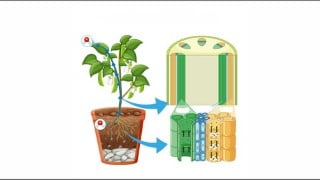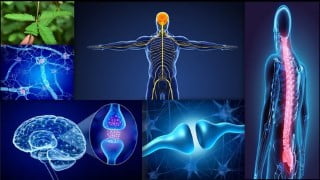Biology – Transport in Plants
This course is designed for biology enthusiasts, beginners in biology, and those preparing for board and competitive exams such as NEET, MHT-CET, State Board, CBSE, ICSE, IGCSE. It covers topics related to plant transport mechanisms, including the movement of water, minerals, and nutrients through xylem and phloem.
What you’ll learn
- Means of Transport
- Plant-Water Relations
- Long Distance Transport of Water
- Transpiration
- Uptake and Transport of Mineral Nutrients
- Phloem Transport: Flow from Source to Sink
SUMMARY
Plants obtain a variety of inorganic elements (ions) and salts from their surroundings especially from water and soil. The movement of these nutrients from environment into the plant as well as from one plant cell to another plant cell essentially involves movement across a cell membrane. Transport across cell membrane can be through diffusion, facilitated transport or active transport. Water and minerals absorbed by roots are transported by xylem and the organic material synthesised in the leaves is transported to other parts of plant through phloem.
Passive transport (diffusion, osmosis) and active transport are the two modes of nutrient transport across cell membranes in living organisms. In passive transport, nutrients move across the membrane by diffusion, without any use of energy as it is always down the concentration gradient and hence entropy driven. This diffusion of substances depends on their size, solubility in water or organic solvents. Osmosis is the special type of diffusion of water across a selectively permeable membrane which depends on pressure gradient and concentration gradient. In active transport, energy in the form of ATP is utilised to pump molecules against a concentration gradient across membranes. Water potential is the potential energy of water molecules which helps in the movement of water. It is determined by solute potential and pressure potential. The osmotic behaviour of cells depends on the surrounding solution. If the surrounding solution of the cell is hypertonic, it gets plasmolysed. The absorption of water by seeds and drywood takes place by a special type of diffusion called imbibition.
In higher plants, there is a vascular system comprising of xylem and phloem, responsible for translocation. Water minerals and food cannot be moved within the body of a plant by diffusion alone. They are therefore, transported by a mass flow system – movement of substance in bulk from one point to another as a result of pressure differences between the two points.
Water absorbed by root hairs moves into the root tissue by two distinct pathways, i.e., apoplast and symplast. Various ions, and water from soil can be transported upto a small height in stems by root pressure. Transpiration pull model is the most acceptable to explain the transport of water. Transpiration is the loss of water in the form of vapours from the plant parts through stomata. Temperature, light, humidity, wind speed and number of stomata affect the rate of transpiration. Excess water is also removed through tips of leaves of plants by guttation.
Phloem is responsible for transport of food (primarily) sucrose from the source to the sink. The translocation in phloem is bi-directional; the source-sink relationship is variable. The translocation in phloem is explained by the pressureflow hypothesis.
Who this course is for:
- Biology enthusiast
- Beginners in Biology
- NEET & MHT-CET aspirants
- Those preparing for board and competitive exams State Board, CBSE, ICSE , IGCSE, MHT-CET & NEET
User Reviews
Be the first to review “Biology – Transport in Plants”
You must be logged in to post a review.







There are no reviews yet.